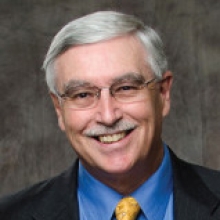Areas of Innovation at Consortium Law Schools: Faculty Development Initiatives
Previously, we have drawn from the Educating Tomorrow’s Lawyers’ survey to describe the 23 ETL Consortium schools, explore the kinds of curricular innovations in which they may be engaged, and see how they compare to law schools more generally. This post continues our description by looking at support for faculty engagement in the improvement of teaching and learning among the ETL Consortium schools. We do so because curricular innovation alone is insufficient. Success also requires a broader institutional commitment to faculty development. With this in mind, the survey asked generally about new faculty development initiatives since 2001 involving teaching and learning, and then asked a series of questions about specific kinds of initiatives since 2001. This post reports on the responses of the ETL Consortium schools to these questions in comparison to non-ETL schools.
Of the total 118 U.S. law school respondents to the survey, all respondents reported an initiative about curricular innovations since 2001, but only 78% responded that they had started some kind of faculty development initiative related to teaching and learning since 2001. There is not much difference between ETL and non-ETL members at this most general level. For ETL members, 74% started a faculty development initiative since 2001; this compares to 80% for non-ETL members. The percentages for ETL and non-ETL schools alike decrease when we look at the more specific initiatives the survey asked about. While there is simply less activity in this area compared to curriculum, ETL members do come out ahead in some crucial ways.
Figure 1 compares the percentage of non-ETL and ETL members who indicated starting an initiative since 2001, in each of five faculty development areas related to teaching and learning. The survey asked about organized workshops or conferences at a school relating to teaching and learning generally, and about workshops or conferences related to integrative approaches specifically. It also asked about faculty grants or support to aid in the development of innovative approaches to teaching generally and integrative approaches specifically. Because integration is at the heart of the recommendations found in Educating Lawyers, the survey also asked specifically about initiatives related to integrative approaches. Additionally, the survey asked about faculty development programs for adjuncts – the instructors who might be the closest to the actual practice of law.
Figure 1. Non-ETL and ETL Members:
Responses to Specific Faculty Development Questions

Figure 1 shows that most activity for both non-ETL and ETL members is taking place at the more general level—that is, activity related to teaching and learning generally. Of the five faculty development areas, just over one-half of both ETL and non-ETL schools have started an initiative involving workshops devoted to teaching and learning generally. The most notable differences between ETL members and non-ETL schools involve grants. ETL members are more likely to put money on the table, so to speak, and make the investment. Most importantly, they are more likely to invest in faculty grants to promote integrative approaches. As Figure 1 shows, this is where the greatest disparity between the two groups of schools is found. ETL schools are also more likely to invest in faculty grants with regard to teaching and learning generally, and this is where the second greatest disparity is found. Then, there is no real disparity when it comes to workshops devoted to integrative approaches and programs for adjuncts, although the percentages are not that high for either group of schools. Therefore, there is room for improvement, especially with regard to development programs for adjuncts.
The willingness to invest resources in integrative approaches—through workshops and grants—provides at least one possible link to the curriculum area. It is worth exploring that possibility. For ETL members, twenty (87%) responded that they had at least started a curricular initiative with regard to integrative approaches linking doctrine and practical experience. Eight of those twenty (40%) have also organized faculty workshops on integrative approaches and nine of the twenty (45%) have grants to support the development of integrative approaches. Five of the twenty (25%) have both. In contrast, the comparable percentages for the non-ETL schools show that only 71% had started at least one curricular initiative involving integrative approaches, 42% had workshops, 27% had grants, and 21% had both. Even with these differences for the two groups of schools, the figures suggest something important—a link between curricular initiatives involving integrative approaches and initiatives involving faculty development grants to support integrative approaches. This is the kind of coordinated effort needed for successful innovation, and ETL members are slightly ahead in this regard.
Subsequent posts will further explore this idea of coordinated efforts involving curricular and other initiatives, including those related to faculty professional activity related to teaching and learning. Along with an institutional commitment to faculty development, successful innovation also requires an incentive structure that appropriately recognizes and rewards professional activity related to teaching and learning.


